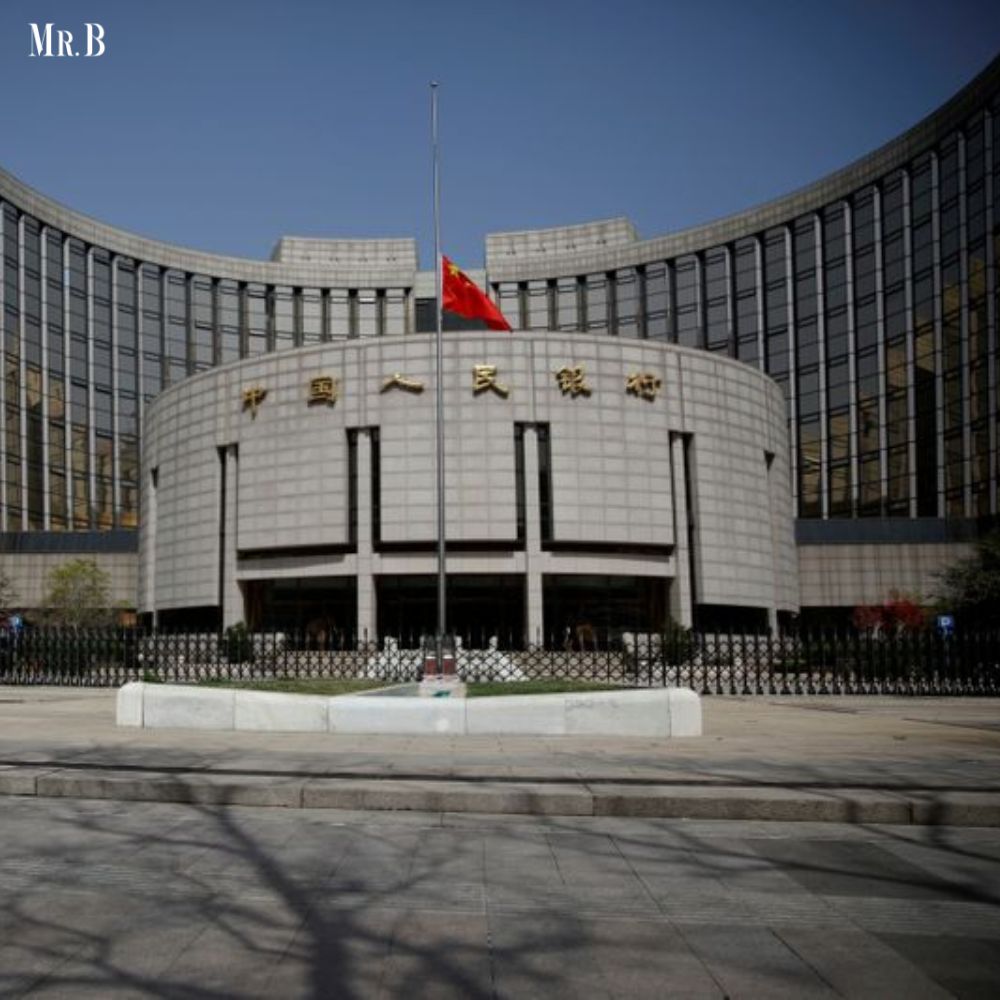Source-www.marketscreener.com
Central Bank’s Unscheduled Lending Operation
In a surprising move aimed at boosting the economy, China’s central bank, the People’s Bank of China (PBOC), implemented an unexpected lending operation on Thursday. This decision marked the second surprise within a week, following Monday’s cut in several benchmark lending rates. The central bank issued 200 billion yuan ($27.5 billion) in one-year loans through its medium-term lending facility (MLF) at a rate of 2.30%, which is 20 basis points lower than the previous MLF loan.
Additionally, the PBOC injected 235.1 billion yuan into markets via seven-day reverse repos at 1.70%, intending to maintain “reasonably ample month-end banking system liquidity conditions.” These measures underscore the authorities’ intent to deliver a more substantial monetary stimulus to support the economy. The timing of this decision is significant, occurring just days after a major leadership meeting that outlined other reforms aimed at invigorating economic activity.
Market Reactions and Economic Concerns
The central bank‘s actions, although intended to bolster the economy, were met with negative reactions from China’s stock markets. Investors interpreted the urgency of these measures as an indication of more severe deflationary pressures and weaker consumer demand than previously anticipated. Consequently, the Hang Seng China Enterprises index in Hong Kong, which monitors Chinese firms listed there, dropped by 1.6%, extending its losses to 5% for the month. China’s major stock indexes, the Shanghai Composite and CSI 300, have also experienced declines throughout the week.
Sovereign bond yields fell following the announcement of the MLF operation and rate cut, reflecting market adjustments to the unexpected move. The PBOC’s rate cuts followed weaker-than-expected GDP data released earlier in the month, raising concerns about the health of the economy. Analysts, such as Xing Zhaopeng, a senior China strategist at ANZ, noted that the MLF rate cut was “basically a reaction to the sharp declines in the stock market.”
Broader Economic Implications and Future Expectations of China’s Central Bank
The PBOC’s unexpected monetary easing comes amid broader economic challenges, including the maturing of a significant amount of outstanding MLF loans, which total over 7 trillion yuan, with 4.68 trillion yuan set to mature this year. Marco Sun, chief financial market analyst at China’s central bank suggested that the policy rate cuts could reduce financing costs and inject liquidity into the market. The central bank might further replace maturing loans with a permanent cash injection by reducing banks’ reserve requirements (RRR).
Some market analysts speculate that the recent rate cuts were also in response to major lenders, including the Industrial and Commercial Bank of China (ICBC) and others, lowering deposit rates by 5 to 20 basis points. Gary Ng, Asia Pacific senior economist at Natixis, noted that cutting the MLF rate on a larger scale could help protect banks’ net interest margins. However, Khoon Goh, head of Asia research at ANZ, emphasized that rate cuts alone, particularly of the magnitude seen, might not suffice to address the deeper issues facing the Chinese economy, such as challenges in the property sector and low consumer confidence.
He argued that more concrete fiscal support or additional policy measures would be necessary to effectively tackle these issues. The rate cuts precede a meeting of the Communist Party’s top decision-making body, the Politburo, which is expected to further address the economic challenges.







